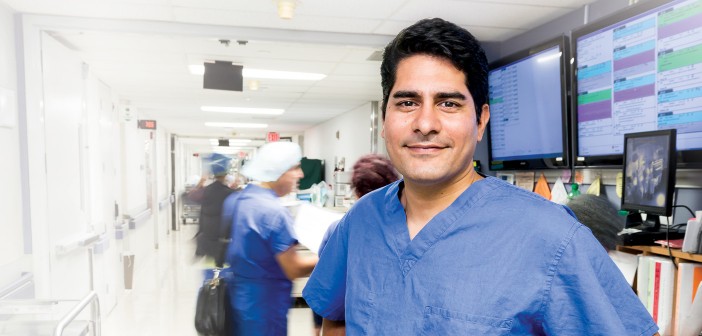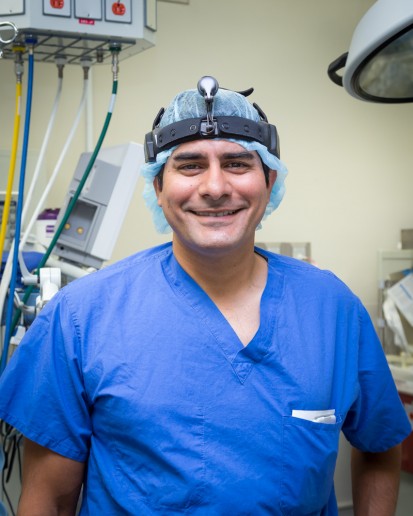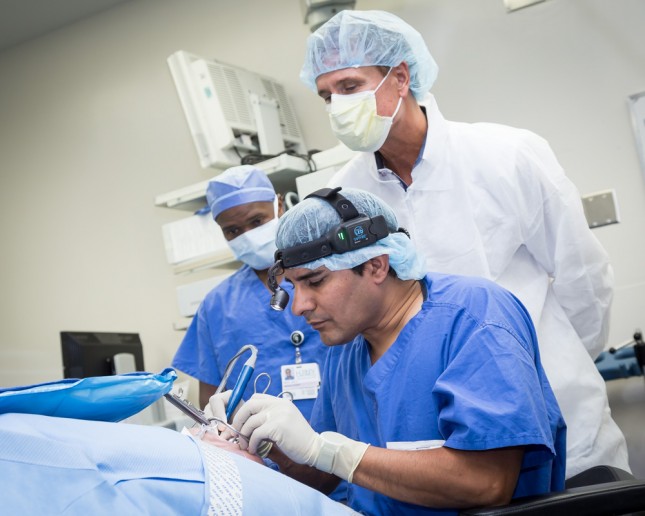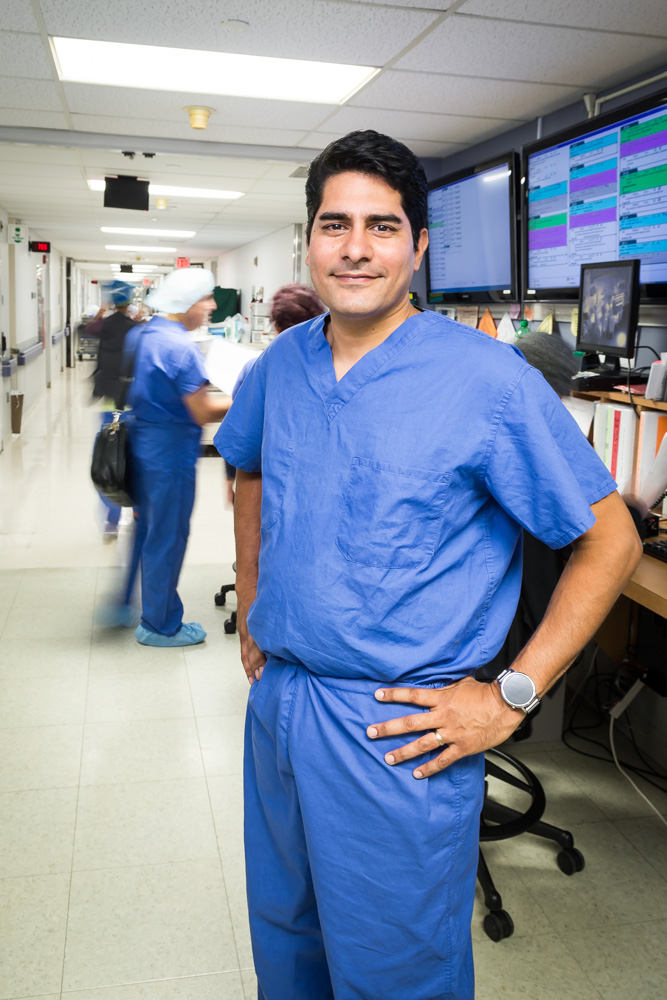It’s no secret that Greater Flint residents have access to top-quality health care, and My City is happy for the opportunity to highlight some of the local professionals who provide it. For this month’s feature, MCM’s publisher and photographer were invited to observe several procedures performed by Dr. Bobby Mukkamala, including the one described here. Our thanks to Hurley Medical Center and Dr. Bobby for letting us go inside the O.R. with him.
PROCEDURE/SURGERY: Tonsillectomy & Adenoidectomy
CREDENTIALS: Board-certified Otolaryngologist
FACILITY: Hurley Medical Center
METHOD/DESCRIPTION: A Tonsillectomy and Adenoidectomy (T&A) is performed on children for two main reasons: recurrent strep infections (more than five a year or more than three a year for three consecutive years), and sleep apnea. Because adenoids shrink away by adulthood, adults would have tonsils removed due to chronic build-up of bacteria and debris (tonsilloliths) in the crypts of their tonsils, which appear as white lumps and cause discomfort.
“This is a very successful procedure due to
significant technological advances.”
– Dr. Mukkamala
The T&A was once done with just a scalpel, which resulted in tremendous blood loss. Then, cautery (burning the tissue) was used and dramatically mitigated bleeding, but there was still a lot of post-procedure pain. Now, Dr. Mukkamala uses a radiofrequency energy method, called coblation, to remove the tonsils. With this method, the post-procedure pain is reduced and while bleeding during surgery is minimal, there is a 5% percent risk of some bleeding afterward. Overall, there is a 3% chance that the patient will need another procedure to control the bleeding following coblation.
Most children who have Tonsillectomy and Adenoidectomy have dramatic reduction and/or elimination of recurrent strep infections and Obstructive Sleep Apnea (OSA). The success rate of this procedure is greater than 90%. Patients should know that it is an outpatient procedure performed under general anesthesia, and takes about 30 minutes to complete. Dr. Mukkamala says children can typically resume normal activity in 7-10 days. He says the worst of the post-operative pain is between days three and six, and recommends a diet of soft foods for the first ten days after surgery.
Photography by Eric Dutro




















